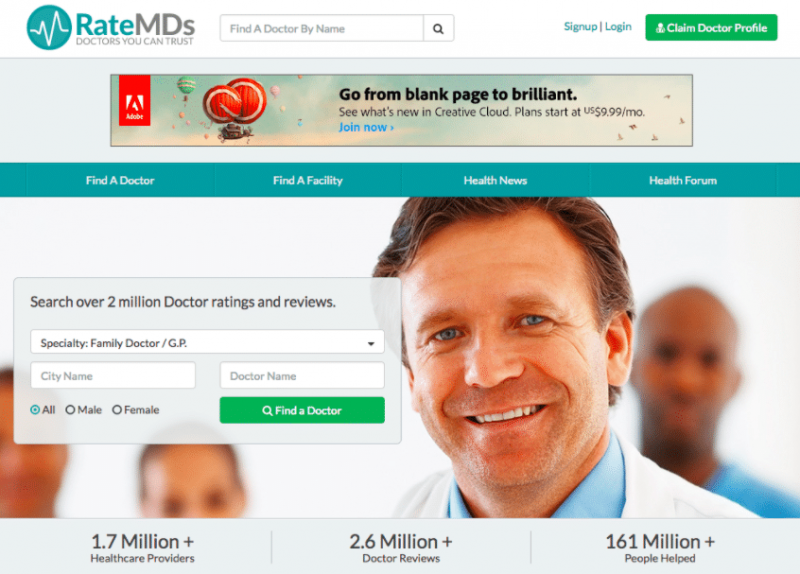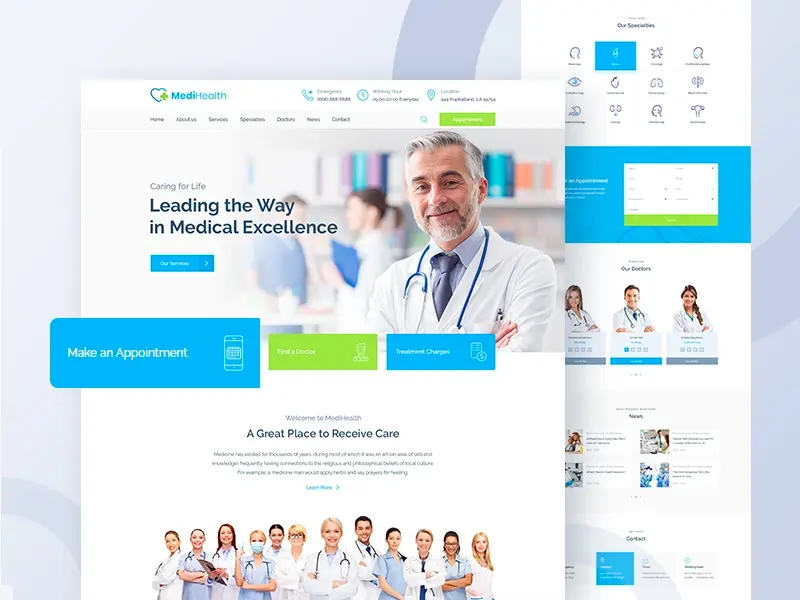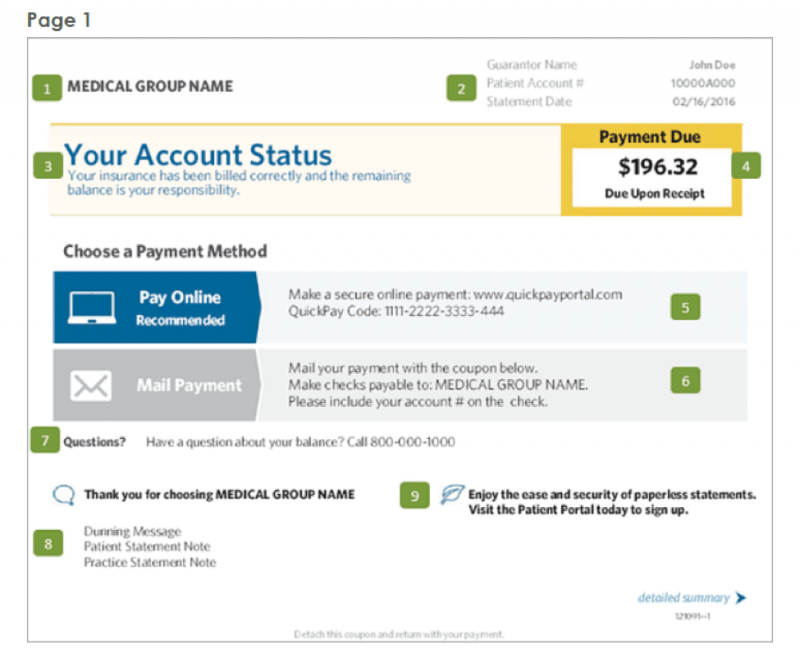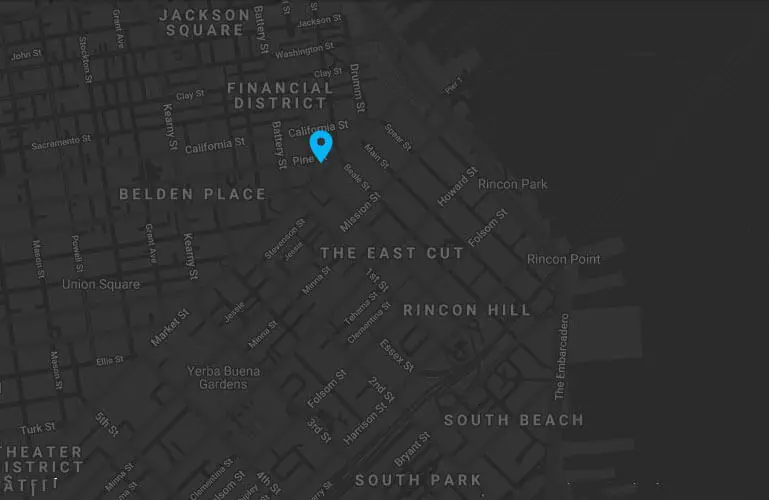Healthcare Web Design Guide: Best Practices In 2020
What are the qualities of a good website for the healthcare industry? Healthcare web design is all about establishing trust online by creating a website that effectively connects with each one of them on a personal, secure, and consistent level. In this article, we provide our healthcare web design guide to help you make informed decisions in regards to your web presence.
Administrators of health care institutions require a website that can respond to their dynamic needs, whether it be for patients, doctors, faculty, staff or media. This mandates the creation of a website with an audience-centric design perspective.
Good healthcare web design leverages the brand and image of the company to convey this trust through multiple marketing channels, online and in the real world. Recently, I was driving through Dallas and saw a billboard sign for Medical City Dallas, a client and hospital subsidiary of the Hospital Corporation of America. The billboard was just one of many throughout the Dallas area and showed an electronic statistic for average weight times at the ER. What caught my attention is that the image they used of the ER was the same one we used as a hero image on the website. They understood the importance of establishing trust and consistency.
By growing trust, a healthcare web design can help hospitals and health care systems grow their business while at the same time establishing brand loyalty. It is not uncommon for people to have their “favorite” hospital and be willing to drive right past another hospital in the event of an emergency to get to their preferred destination. Once a person finds a good pediatrician, family care physician, psychiatrist, oncologist, etc. they are perfectly willing to go clear across town to see them.
Healthcare websites play a significant role in a patient’s evaluation process. Here are questions that healthcare administrators and their web design agency should discuss:
- What kind of impression should the website make?
- Will the website have clearly distinguished hospital/clinic specialties and service offerings?
- Who are the target audiences, what are their needs and how can the website service those needs?
- Will the website clearly define segments of the site based on target audience (eg., patients, prospective patients, media, insurance companies)?
- Will the website provide easily accessible information regarding the facility and it’s doctors?
- Will it be intuitive and simple to navigate?
- Will it be fast and easy to explore on mobile devices?
- Will the website provide a patient portal for online bill information and payment?
- What are the calls-to-action that will conclude the audience’ online experience achieve the outcome they were expecting?
Healthcare web design guide and SEO.
When patients begin the process of evaluating healthcare facilities, it usually begins by searching the Internet. The search engine results page, or SERP, displays a list of links to websites that best match the search term used by the searcher. The art and science of improving your organic ranking on search engines is known as search engine optimization. Effective, white-hat search engine optimization, or SEO, will improve your online brand visibility and better connect you to your target audience. SEO is a very simple concept to grasp, yet can be extremely tedious to execute.
For healthcare web design, optimizing the website for search engines should be a priority from the very inception of the project. SEO has many components that have become highly specialized, producing a diverse set of skills in the SEO industry. When building the website, there will be technical challenges for the web developer to insure that it is properly coded and structured for modern web standards, such as the W3C. By adhering to web standards, you will ensure that the website is optimized for search engines, web browsers and mobile devices. In addition to technical SEO, there are two primary strategies that can be employed to increase your organic site ranking:
Inbound SEO
Content optimization
Keyword analysis
Meta descriptions
XML sitemap creation
Website blog
Outbound SEO
Local SEO optimization
Google My Business management
Organic backlink building
Directory listings registration
Reputation Management
If you are interested in working with us regarding your search engine optimization strategy, then connect with us today and get access to testimonials from our previous clients so that you can be assured of the quality of our work.
Healthcare web design guide and ADA compliance.
For obvious reasons, healthcare websites should be very concerned with ADA compliance. The Americans with Disabilities Act, or ADA, was created by congress as a supplement the Civil Rights Act of 1964, which outlawed discrimination based on race, color, religion, gender or national origin. ADA-compliance was created to protect individuals with disabilities from discrimination and to ensure accessibility. In the real world, this applies to the physical accommodation to businesses as building construction and alterations must comply with ADA design standards in order to meet ADA compliance.
While most of us are familiar with these requirements, many of us might be surprised to learn that the same standards apply to the digital world, in particular websites. Known as Section508, these standards are to ensure that people with disabilities are able to access content to a website with the same convenience as people without disabilities. As a healthcare provider, you are compelled by the law to remove any technical obstructions that may discriminate against people with disabilities. Failure to comply with ADA design standards may result in fines or even a lawsuit.
A popular online service to assist with ADA compliance is called accessiBe. At only $490/yr, accessiBe provides an automated solution for ADA & WCAG accessibility compliance in an attractive display that overlays your website when prompted by the user.
If you are concerned about ADA compliance with your website please contact us today for a complementary assessment.
Healthcare web design guide and best practices.
In addition to ADA compliance and SEO, what are the best practices healthcare websites should follow in order to create an effective web presence that meets the needs of their target audience? Following analytic and market research data, it is known that patients view trust as their #1 consideration when choosing a healthcare provider.
Good healthcare web design will place this trust at the forefront of the website with absolute transparency. A good healthcare website ALWAYS places the needs of the patient first. With such a competitive industry, a healthcare provider must stand above its competition, as patients will have multiple options to choose from. An attractive, engaging, intuitive, informative, mobile-friendly, ADA-complaint and transparent website with strong calls-to-action can play a significant role in achieving this objective.
To ensure that your healthcare web design is patient-centric and provides visitors with what they are looking for, here are some best practices you should follow:
Healthcare Web Design Guide Best Practice #1.
Patient reviews.
Whether it’s for rating the new restaurant down the block, bashing an incompetent plumbing service or discussing a personal experience with a hospital, reviews have a huge social and psychological impact. Offering a platform for patients to provide feedback will not only increase patient/customer satisfaction but will give others confidence when their time comes to make decisions regarding their healthcare provider. In fact, the majority of patients will base their decision – at least in strong part – to online reviews. Positive reviews will serve as a reinforcement in their decision-making process whereas negative reviews will drive them elsewhere. Reviews are an excellent source of transparency and trust-building that healthcare providers need to pay close attention to.
Healthcare Web Design Guide Best Practice #2.
Areas of specialty.
Most hospitals are massive compounds with with multiple areas of specialty. Aimlessly wandering through a bulky website to find a particular specialty or service offering can quickly become a chore, which will drive the visitor away from the website. Locating specialties on a healthcare website should be a seamless process for patients. When building the website for Suburban Hospital in Bethesda, MD, we actually came up with a design/UX strategy that differentiated areas of speciality by color. When a patient visited a particular specialty section of the website, the overall site design conformed to the corresponding color palette associated with each specialty..
Healthcare Web Design Guide Best Practice #3.
Physician Bios.
Doctors and other healthcare professionals are the heart of any healthcare organization. Strip away the science and technological marvels of modern medicine and we find people. Doctors are people, too. Good healthcare organizations have good doctors. Poor healthcare organizations have poor doctors. By providing physician bios on your healthcare website you are creating a personalized experience for patients and establishing trust. Bios tend to humanize the entire medical process and procedure, making patients feel more comfortable with their physician as well as allay fears of what they are facing.
Healthcare Web Design Guide Best Practice #4.
Appointment scheduling.
Providing the functionality for appointment scheduling on your healthcare website is an important feature for patients. Online appointment scheduling is a convenience for customers and allows them to make appointments at any time of the day and on any device without having to call to schedule an appointment.
If your website is built using WordPress you have several plugin options for adding appointment scheduling to your site. Here are a few of the most popular plugins:
Healthcare Web Design Guide Best Practice #5.
Patient billing portal.
Healthcare billing and dealing with insurance companies can be one of the most confusing and frustrating experiences a person can have, especially during stressful times. In fact, the process can become so cumbersome that it can actually put off patients from proceeding with their healthcare priorities. This is not good for the patient or the healthcare provider.
Providing a well-designed patient billing portal on your website is an important component of your healthcare web design. A patient billing portal will reduce patient stress while at the same time increasing customer satisfaction and trust in the healthcare provider.
Conclusion.
Healthcare web design is all about establishing trust online by creating a website that effectively connects with patients intuitively on a personal, secure level. When your healthcare web design puts patient needs first you are providing the proper user experience.
Administrators of health care institutions require a website that can respond to their dynamic needs, whether it be for patients, doctors, faculty, staff and media. Our team approaches each healthcare design project with a patient-centric design perspective.
Our healthcare web design services provide a comprehensive solution to your online marketing needs. We will help you to connect your organization with its target audience using a hand-crafted, custom approach, creating a powerful and cost-effective web presence with measurable results.
If you need assistance with your healthcare web design, then connect with us today and get access to testimonials from our previous clients so that you can be assured of the quality of our work. When you get in touch, we will listen closely to help develop your goals into achievable results. Everyone on our team is looking forward to bringing your project to life, so get in touch today and to schedule an initial discussion.
To schedule your own complimentary healthcare web design consultation, call us at 888.938.8289 or email us at inquiry@deepblue.com.
D E E P B L U E Knows the Market

D E E P B L U E is a San Francisco web designer that delivers measurable results to the healthcare industry. Learn more about our healthcare web design services and contact us to schedule a complimentary needs-assessment consultation.











